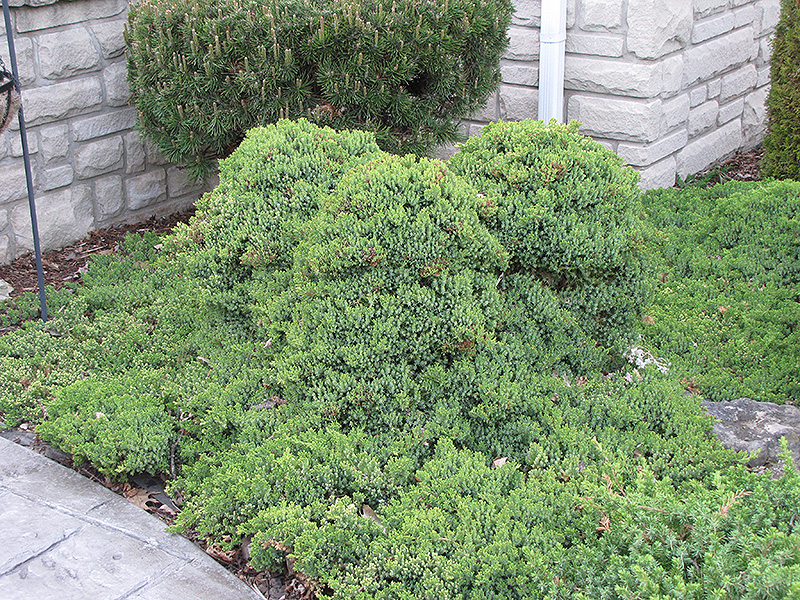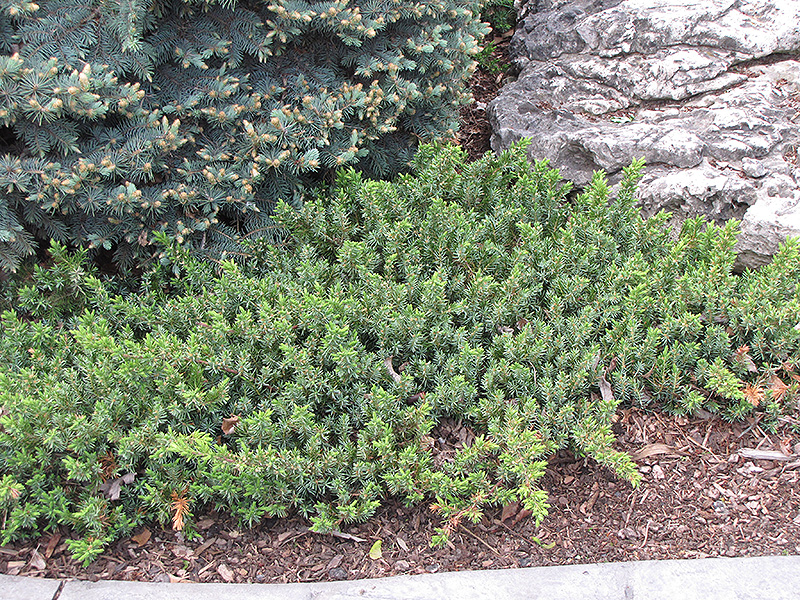Juniper, Dwarf Japanese Garden Juniperus procumbens 'Nana' Height: 12 inches Spread: 6 feet
Sunlight:
Hardiness Zone: 4a Other Names: Japanese Garden Juniper Description: A spectacular and dependable groundcover for sunny locations, extremely low growing and mat-forming, spreads almost indefinitely, very adaptable; superb choice for a low groundcover when used in mass, considered one of the best by designers Ornamental Features Juniper, Dwarf Japanese Garden is a dwarf conifer which is primarily valued in the garden for its broadly spreading habit of growth. It has attractive bluish-green evergreen foliage. The scale-like sprays of foliage are highly ornamental and turn plum purple in the fall, which persists throughout the winter. It produces blue berries from late spring to late winter. Landscape Attributes Juniper, Dwarf Japanese Garden is a dense multi-stemmed evergreen shrub with a ground-hugging habit of growth. It lends an extremely fine and delicate texture to the landscape composition which should be used to full effect. This is a relatively low maintenance shrub, and is best pruned in late winter once the threat of extreme cold has passed. Deer don't particularly care for this plant and will usually leave it alone in favor of tastier treats. It has no significant negative characteristics. Juniper, Dwarf Japanese Garden is recommended for the following landscape applications; Planting & Growing Juniper, Dwarf Japanese Garden will grow to be about 12 inches tall at maturity, with a spread of 6 feet. It tends to fill out right to the ground and therefore doesn't necessarily require facer plants in front. It grows at a slow rate, and under ideal conditions can be expected to live for approximately 30 years. This shrub does best in full sun to partial shade. It does best in average to evenly moist conditions, but will not tolerate standing water. This plant should be periodically fertilized throughout the active growing season with a specially-formulated acidic fertilizer. It is not particular as to soil type or pH. It is highly tolerant of urban pollution and will even thrive in inner city environments. This is a selected variety of a species not originally from North America. Special Attributes Evergreens need to be watered during the winter. Our desert climate especially in late winter to early spring evergreens can suffer during next growing season. An easy way to remember check for dryness on the holidays Halloween, Thanksgiving, New Year's Day, Valentines Day & Easter.![]()
![]()
![]()
![]()
![]()
![]()
![]()
![]()
![]()
![]()
![]()
![]()
![]()
![]()
![]()
![]()


